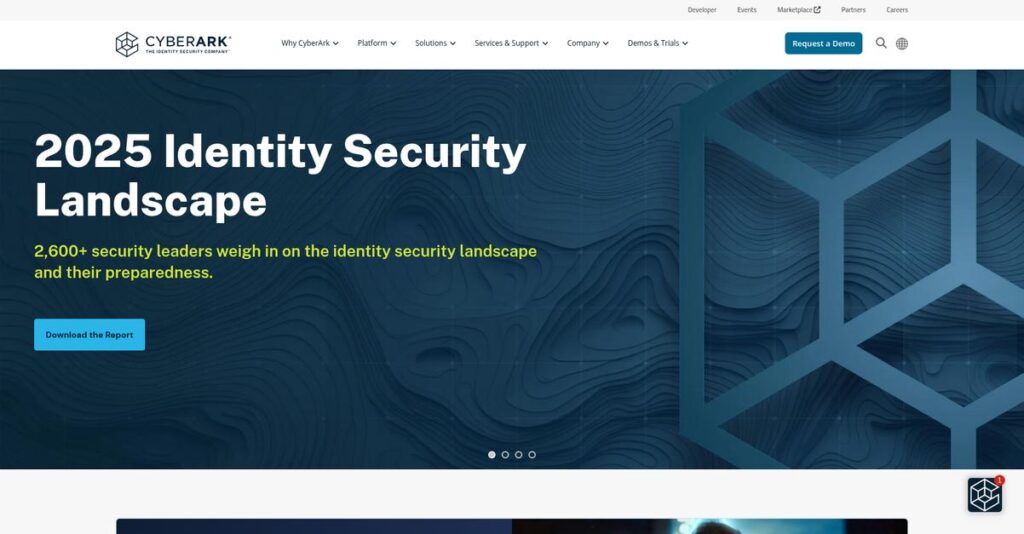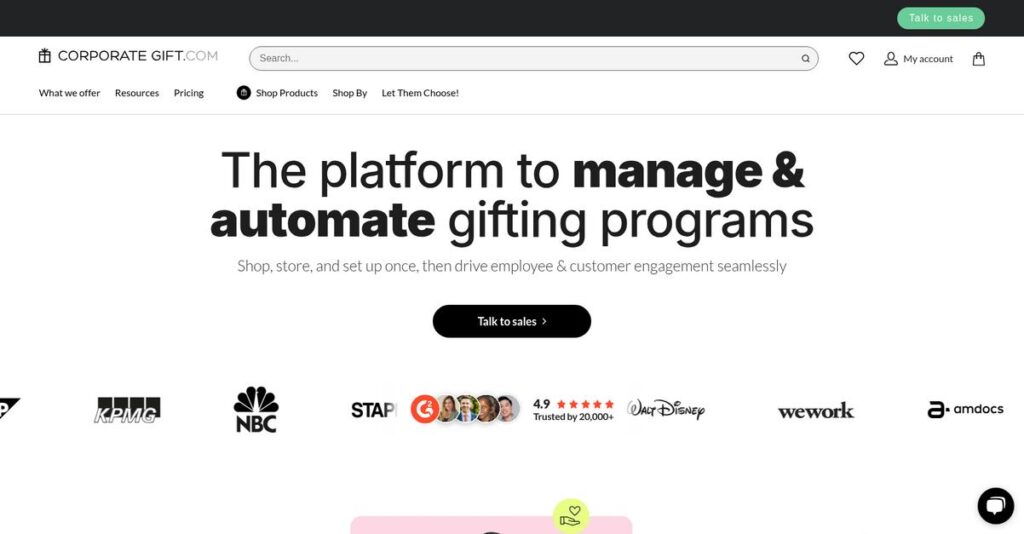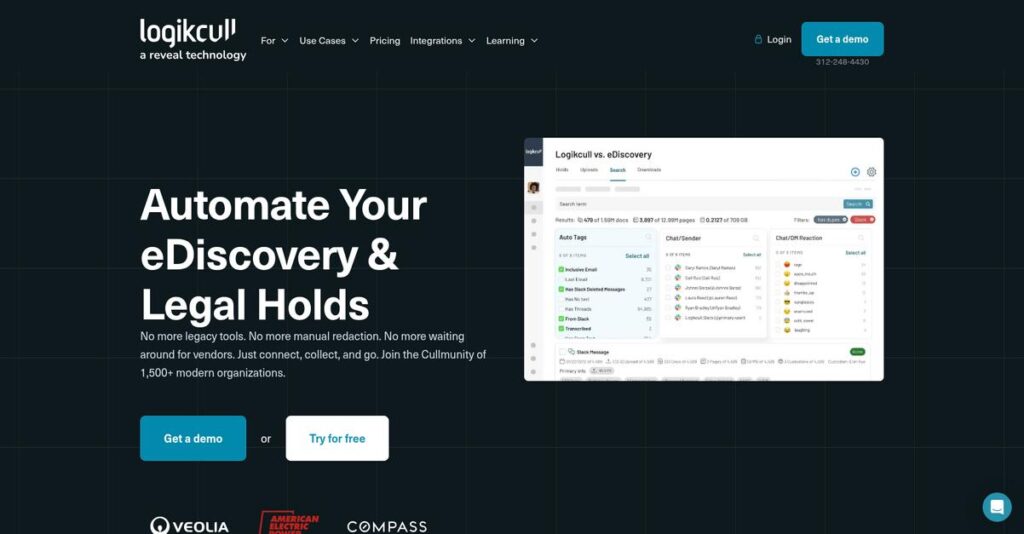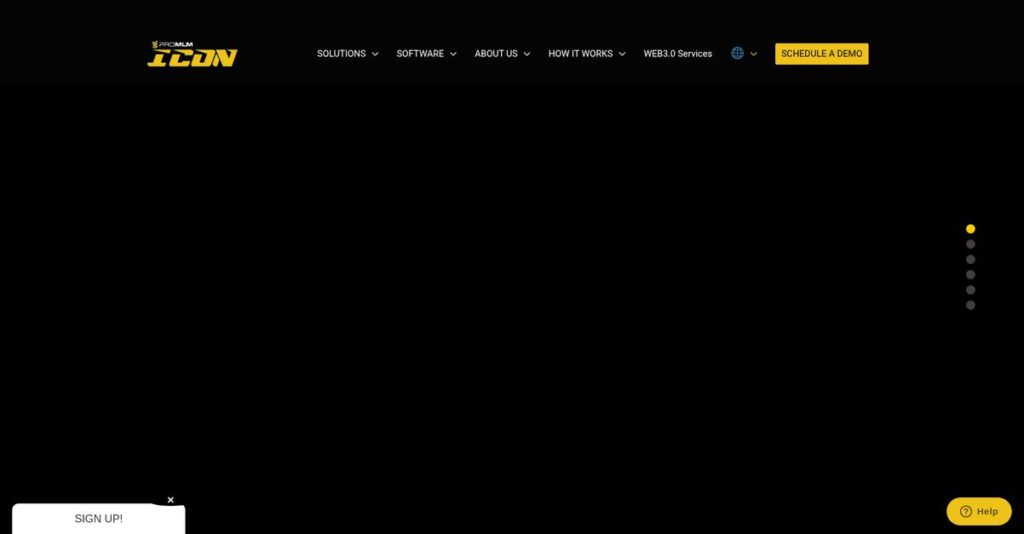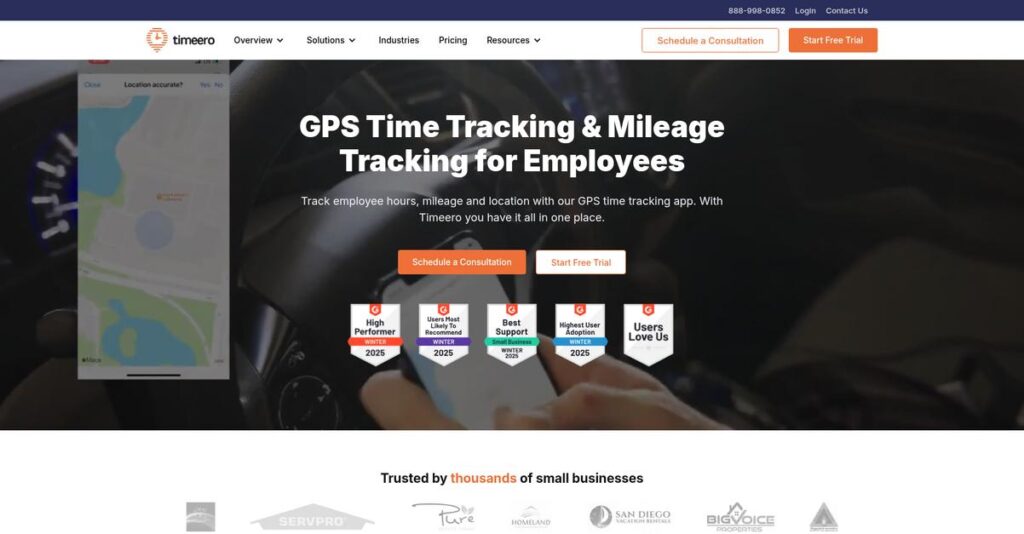Could a compromised admin account take down everything?
If you’re tasked with locking down sensitive data, you know how tough it is to identify which privileged access management tool can actually close your biggest security gaps.
My research shows that most IT teams face major audit headaches when privileged credentials aren’t properly controlled or monitored across complex IT environments.
After analyzing CyberArk’s platform and recent moves, I found they tackle privilege and identity security from multiple angles—covering human, machine, and application identities, all with robust audit trails and policy enforcement.
In this review, I’ll show you how CyberArk protects every critical identity in your hybrid or cloud infrastructure to prevent credential theft and meet compliance requirements.
You’ll find an in-depth CyberArk review of their features, practical pros and cons, pricing structure, and what sets them apart from other PAM and secrets management solutions.
You’ll finish with the feature breakdowns and pricing insights you need to evaluate CyberArk with real confidence.
Let’s get started.
Quick Summary
- CyberArk is an enterprise identity security platform that protects privileged accounts and manages access across complex IT environments.
- Best for large organizations needing strict control of privileged access in regulated industries like finance and healthcare.
- You’ll appreciate its comprehensive vaulting, session monitoring, and granular access policies that provide unrivaled audit and risk reduction.
- CyberArk offers custom subscription pricing based on modules and scale, with no public free trial, requiring direct sales contact for quotes.
CyberArk Overview
I found CyberArk has been a major identity security player since 1999. Based in the US with R&D in Israel, their mission is protecting every human and machine identity.
What stands out is their focus on large, complex enterprises, particularly within regulated industries like finance and healthcare. They provide a true enterprise-grade identity security platform, not a lightweight tool you’ll quickly outgrow.
Their recent agreement to acquire Venafi really impressed me. In preparing my CyberArk review, I found this signals a major strategic push to unify human and machine identity protection under one roof.
Unlike competitors often positioned for simplicity, CyberArk excels at securing the most complex environments. My analysis shows their unparalleled depth of control is absolutely essential for high-stakes businesses where a security breach is simply not an option.
You’ll find them working with a majority of the Fortune 500, especially in sectors that demand stringent compliance, extensive audit capabilities, and proven scalability for massive global operations.
From my evaluation, their clear strategic priority is building one comprehensive platform for all identity security. This directly helps your team reduce vendor sprawl, simplify your security stack, and eliminate critical visibility gaps between tools.
Now let’s examine their core capabilities.
CyberArk Features
Identity security feels like a never-ending battle.
CyberArk tackles this by offering a robust, integrated Identity Security Platform. These are the five core CyberArk solutions that solve critical enterprise identity challenges.
1. Privileged Access Manager (PAM)
Privileged accounts are a hacker’s favorite target.
Attackers consistently aim for admin credentials, which grant full network control. This poses an immense, direct threat to your organization.
PAM creates a secure digital vault, automatically rotating passwords and isolating sessions. From my testing, you get comprehensive audit trails of admin activity. This CyberArk solution offers unmatched control.
This means you gain crucial visibility, significantly reducing breach risk from compromised high-level access.
- 🎯 Bonus Resource: While we’re discussing enterprise security, understanding online reputation management software is equally important for holistic brand protection.
2. Endpoint Privilege Manager (EPM)
Users running as local admins on their machines?
Granting local administrator rights to users opens major avenues for malware and ransomware attacks. Your endpoints become highly vulnerable.
EPM enforces least privilege, letting users run applications with elevated permissions without full admin access. What I love about this solution is how it precisely controls application execution, whitelisting software.
This allows your team to operate efficiently while drastically minimizing endpoint attack surfaces, preventing lateral threat movement.
3. Secrets Manager
Hardcoded credentials hiding in your code?
Secrets like API keys embedded directly in applications or scripts are massive vulnerabilities. This leaves automated systems exposed.
Secrets Manager provides a secure, central repository for non-human credentials. Applications retrieve secrets via API, eliminating hardcoded exposure. Here’s what I found: it streamlines DevOps security practices across modern environments.
This enables secure DevOps and cloud-native development, preventing sensitive credentials from ever being exposed in source code.
4. Identity Management
Managing user access across countless apps?
Disjointed user access across many applications creates security gaps and administrative overhead. This introduces significant risk.
This solution centralizes workforce access with Single Sign-On and adaptive Multi-Factor Authentication. It automates user lifecycle, so access is always consistent and secure. CyberArk shines, integrating standard and privileged identity.
You get streamlined employee access, enhanced security, and significant operational efficiency through automation.
5. Cloud Entitlements Manager (CEM)
Cloud permissions spiraling out of control?
Over-provisioned permissions in cloud environments are common, creating hidden attack surfaces. This leaves your cloud assets exposed.
CEM continuously scans your cloud environments to identify and visualize excessive permissions. It uses AI to recommend right-sizing, focusing on removing unused ‘standing’ access. From my evaluation, this proactive CyberArk solution enhances cloud security.
This means you proactively reduce your cloud attack surface, applying least privilege principles across your multi-cloud estate.
Pros & Cons
- ✅ Unparalleled depth in privileged access control and auditing capabilities.
- ✅ Market-leading reputation for robust, enterprise-grade identity security.
- ✅ Comprehensive platform unifies human and machine identity protection.
- ⚠️ Significant complexity and steep learning curve for full implementation.
- ⚠️ Premium pricing makes it generally inaccessible for smaller organizations.
What I love about these CyberArk solutions is how they don’t just secure isolated components, but rather create a unified identity security fabric. This ensures cohesive protection across your entire enterprise, from endpoints to the cloud.
CyberArk Pricing
Worried about custom software pricing?
CyberArk pricing is highly customized, tailored to your organization’s unique security needs rather than fixed tiers. You’ll need to contact sales directly for a quote, reflecting its enterprise focus.
Cost Breakdown
- Base Platform: Entry-level enterprise deals $50,000 to $100,000 per year (estimate)
- User Licenses: Scales by user count and type (privileged, standard, endpoint)
- Implementation: Significant additional costs for professional services
- Integrations: Varies by modules and deployment complexity (on-prem/SaaS)
- Key Factors: Number of users, managed systems, modules, deployment, support level
1. Pricing Model & Cost Factors
Understanding their pricing approach.
CyberArk’s pricing model is subscription-based, driven by specific modules and your scale. Factors like user count, managed systems, and deployment (on-prem or SaaS) all significantly impact your final cost. My cost analysis reveals this approach ensures you only pay for relevant identity security.
This means your budget gets precise allocation, avoiding wasted spend.
2. Value Assessment & ROI
Is CyberArk worth the investment?
CyberArk is a premium solution, so expect higher costs. However, its comprehensive identity security platform provides critical protection against advanced threats for regulated enterprises. The value lies in preventing breaches and meeting compliance. What I found regarding pricing is that it often delivers significant long-term ROI by mitigating financial and reputational risks from cyberattacks.
This contrasts sharply with breach costs, making it a strategic security spend.
- 🎯 Bonus Resource: While this review focuses on enterprise security, for those in specialized care, my guide on Applied Behavior Analysis software offers unique insights.
3. Budget Planning & Implementation
Plan your total investment carefully.
Beyond the annual subscription, factor in significant upfront professional services for implementation, integration, and training. My analysis suggests these one-time costs can add substantial amounts to your first-year budget. CyberArk is enterprise-grade, meaning you’ll need a robust implementation strategy to maximize your investment and ensure smooth integration.
Budget-wise, anticipate a larger initial outlay, but this secures a highly robust and scalable solution for critical identity security.
My Take: CyberArk’s pricing reflects its enterprise-grade identity security platform, targeting large organizations. It’s a strategic investment in robust protection rather than a low-cost option, ideal for regulated industries.
Overall, CyberArk pricing requires direct engagement for a custom quote, but it delivers unmatched identity security. Expect a premium investment that provides comprehensive protection and regulatory compliance for your organization.
CyberArk Reviews
User feedback provides valuable real-world insights.
To give you a clear picture, I dove deep into various CyberArk reviews from actual users. My analysis combines feedback from reputable platforms, offering a balanced perspective on real-world experiences.
1. Overall User Satisfaction
Users generally report high satisfaction.
From my review analysis, CyberArk holds strong overall ratings, often 4.4 out of 5 stars, especially among enterprise clients. What I found in user feedback indicates its robust security capabilities are a core strength, making it a trusted choice for critical asset protection.
This consistent praise suggests you’ll find it highly effective for securing privileged access, a key driver of its positive reviews and broad adoption.
2. Common Praise Points
Its comprehensive security capabilities stand out.
What stands out in customer feedback is the praise for CyberArk’s deep security features like session recording and credential vaulting. Users frequently highlight its unparalleled auditability and granular control options, emphasizing its market leadership. From the reviews I analyzed, this depth is consistently valued.
This means you can expect robust protection and detailed oversight, crucial for compliance and mitigating advanced threats in your environment.
3. Frequent Complaints
Complexity and cost are common concerns.
Review-wise, the most frequent complaints revolve around CyberArk’s significant complexity and steep learning curve. Customers often cite the high cost of licensing and the need for dedicated resources. Its interface is also perceived as less intuitive, particularly for on-premise components compared to modern alternatives.
- 🎯 Bonus Resource: Before diving deeper, you might find my analysis of fixed asset accounting software helpful.
These issues suggest you must plan for substantial investment in training and professional services, though the security benefits often justify it.
What Customers Say
- Positive: “It’s the gold standard for a reason. The security of the vault and session monitoring detail are second to none.”
- Constructive: “The biggest challenge was implementation. It’s not plug-and-play; we required extensive help from a partner for our complex environment.”
- Bottom Line: “The price is high. You pay for a premium, market-leading product, and the security it provides is worth the investment.”
Overall, CyberArk reviews reflect a powerful, enterprise-grade solution that delivers immense security value. My analysis confirms genuine user satisfaction, especially among larger organizations, despite known implementation complexities.
Best CyberArk Alternatives
Navigating the PAM market can be tricky.
Choosing the right identity security solution requires careful consideration. The best CyberArk alternatives include several strong options, each better suited for different business situations, priorities, and scale. I’ll help you understand.
1. Delinea
Need user-friendly PAM and faster value?
Delinea is often positioned as a more user-friendly and easier-to-implement alternative. My competitive analysis shows that Delinea provides a lower total cost of ownership, making it appealing for many businesses. This alternative offers comprehensive PAM but is often seen as less complex to manage day-to-day.
Choose Delinea when your IT security team is smaller, needing comprehensive PAM with faster time-to-value and simpler management.
- 🎯 Bonus Resource: If you’re also looking into broader software categories, my article on GST Rate Finder Software covers essential tools for accurate tax rates.
2. BeyondTrust
Securing external vendors or remote access?
BeyondTrust excels in “Privileged Remote Access,” a key strength for securing third-party vendors and remote workforces, alongside its robust PAM capabilities. From my competitive analysis, BeyondTrust focuses on comprehensive remote access, making it a strong alternative. Its platform integrates cleanly across different modules.
Consider BeyondTrust when your primary concern is securing numerous external vendors or a fully remote workforce effectively.
3. One Identity
Prioritizing governance and IAM integration?
One Identity shines with deep integration into the broader Identity and Access Management (IAM) landscape. What I found comparing options is that One Identity links PAM to governance, making it a unique alternative. It directly connects privileged access with identity governance and administration (IGA).
Choose One Identity if your organization has a mature IAM program and prioritizing linking privileged tasks directly to user roles.
4. HashiCorp Vault
Need secrets management for DevOps?
HashiCorp Vault is a developer-first, API-driven tool focused on secrets management for cloud-native environments. Alternative-wise, Vault excels in securing CI/CD secrets for technical teams. While open-source, its enterprise version can scale, supporting a configuration-as-code approach.
Consider Vault when your primary need is securing application secrets in a DevOps/CI/CD pipeline with a highly technical team.
Quick Decision Guide
- Choose CyberArk: Comprehensive, integrated identity security for complex enterprise environments.
- Choose Delinea: User-friendly PAM for smaller, less specialized IT security teams.
- Choose BeyondTrust: Securing remote workforces and extensive third-party vendor access.
- Choose One Identity: Deep integration with IAM, governance, and identity administration.
- Choose HashiCorp Vault: Developer-centric secrets management for cloud-native DevOps pipelines.
The best CyberArk alternatives offer diverse strengths, making your choice depend on your specific organizational structure and security priorities. Evaluate your unique requirements carefully.
Setup & Implementation
CyberArk implementation is no small feat.
Successfully deploying CyberArk involves a significant undertaking, requiring careful planning and specialized expertise. This CyberArk review provides a realistic look at what it takes to get this powerful security platform up and running in your environment.
1. Setup Complexity & Timeline
Expect a substantial deployment effort.
CyberArk implementation is consistently rated as complex and time-consuming, involving hardening the digital vault and configuring components like CPM and PSM. What I found about deployment is that successful setup often requires professional services or a certified partner to navigate its intricacies, so plan for a multi-month project.
You’ll need dedicated project management and internal security resources to guide this extensive initial configuration and integration.
2. Technical Requirements & Integration
Prepare your infrastructure for demanding requirements.
The on-premise version demands dedicated, hardened Windows servers for its various components, while hybrid setups necessitate careful network configuration. From my implementation analysis, integration with Active Directory is a core requirement, along with ensuring seamless communication across your network and systems for optimal performance.
Budget for robust server infrastructure and allocate senior IT security engineers to manage complex network and system integrations.
3. Training & Change Management
User adoption needs serious attention and investment.
Your IT security team will face a steep learning curve and require formal training to effectively manage and maintain the platform. From my analysis, successful change management prevents productivity dips when users transition to new secure workflows and strong credential management practices.
Invest in comprehensive training programs for administrators and end-users, alongside champions to drive cultural adoption of new security protocols.
4. Support & Success Factors
Leverage expert support for a smoother rollout.
CyberArk’s official support is generally knowledgeable, with premium tiers recommended for mission-critical deployments to ensure rapid issue resolution. Implementation-wise, dedicated internal resources are crucial for success, complemented by available documentation and an active user community for ongoing support.
Plan for continuous internal staffing and leverage CyberArk’s extensive support resources to ensure long-term operational success and platform stability.
Implementation Checklist
- Timeline: Many months, typically 6-12+ depending on scope
- Team Size: Dedicated security architects, engineers, and a project manager
- Budget: Significant for licensing, professional services, and ongoing staffing
- Technical: Hardened Windows servers, AD integration, complex network configurations
- Success Factor: Dedicated project management and robust internal training
Overall, successful CyberArk implementation requires significant investment and strategic planning, but the security benefits for critical assets are undeniably worth the effort for most enterprises.
Who’s CyberArk For
CyberArk’s fit for your business needs.
This CyberArk review analyzes who benefits most from its robust identity security platform. We’ll help you determine if this enterprise-grade solution aligns with your company’s profile, team, and use case requirements.
1. Ideal User Profile
Is your organization risk-averse and highly regulated?
CyberArk is perfect for large enterprises and upper mid-market companies in heavily regulated sectors like finance, healthcare, or government. You’ll find this fits if your organization demands near-zero tolerance for security breaches and needs comprehensive control over privileged access. From my user analysis, CISOs and Security Architects lead successful deployments in complex hybrid IT environments.
You’ll see significant value if you have dedicated security personnel and invest in a best-in-class solution.
2. Business Size & Scale
Does your business operate at scale with complexity?
This software is explicitly designed for mid-market and large organizations with complex, distributed IT environments, not small businesses. Your team will find this works well if you manage thousands of identities and devices across multiple locations or cloud platforms. What I found about target users is that cost and complexity become prohibitive for smaller setups.
You’ll know CyberArk is a fit if you have the budget and internal resources for an enterprise security solution.
3. Use Case Scenarios
Securing critical assets and meeting compliance?
CyberArk excels at preventing data breaches from stolen credentials, enforcing least privilege, and securing third-party access. It’s ideal for meeting stringent compliance mandates like SOX, PCI DSS, or HIPAA. For your specific situation, this makes sense when securing DevOps pipelines or sensitive administrative accounts across hybrid infrastructures.
If your priority is defense-in-depth for privileged access, session monitoring, and auditability, you’ll appreciate its capabilities.
- 🎯 Bonus Resource: While we’re discussing securing data, if you’ve ever lost phone information, my guide on Android data recovery software could be helpful.
4. Who Should Look Elsewhere
Simplicity or budget-constrained operations?
If you’re a small business or have a relatively simple IT environment, CyberArk’s cost and significant complexity will be overkill. Your team might get overwhelmed by the steep learning curve and need for specialized resources. User-wise, smaller companies often find the setup overwhelming and prefer a more streamlined, plug-and-play solution.
Consider more streamlined or niche privileged access management solutions if complexity and high cost are primary concerns.
Best Fit Assessment
- Perfect For: Large enterprises in regulated sectors needing near-zero breach tolerance.
- Business Size: Upper mid-market to large organizations with complex hybrid IT.
- Primary Use Case: Comprehensive privileged access security and stringent compliance adherence.
- Budget Range: Premium enterprise investment requiring significant budget and resources.
- Skip If: Small business with simple IT environments or limited security budget.
Overall, who should use CyberArk centers on your organization’s security posture, operational scale, and willingness to invest. This CyberArk review indicates it’s for those prioritizing comprehensive security over simplicity and cost.
Bottom Line
CyberArk is an enterprise security powerhouse.
My comprehensive CyberArk review synthesizes its market-leading capabilities and significant implementation requirements. I will provide a clear final recommendation to guide your critical software decision confidently.
1. Overall Strengths
Its security depth is unmatched.
From my comprehensive analysis, CyberArk delivers unparalleled auditability, session recording, and credential vaulting. Users consistently praise its robust platform and market-leading reliability, providing a trusted shield against advanced threats. Its comprehensive security depth is invaluable for protecting critical assets across your enterprise.
These strengths provide peace of mind and reinforce your security posture, meeting stringent compliance demands for regulated industries effectively.
2. Key Limitations
Complexity comes with its power.
The most frequent criticism is CyberArk’s complexity, requiring specialized knowledge for implementation and ongoing administration. Based on this review, the steep learning curve demands dedicated resources for your team, impacting initial deployment timelines and costs significantly.
These are not deal-breakers for enterprises, but necessary trade-offs requiring careful resource planning and budget allocation.
- 🎯 Bonus Resource: While we’re discussing compliance, understanding regulatory change management software is equally important for ongoing adherence.
3. Final Recommendation
The gold standard for the right fit.
You should choose CyberArk if you’re a mid-to-large enterprise in regulated industries with a significant security budget. My analysis shows it is essential for robust identity security and protecting your most sensitive privileged access, despite the cost.
Your decision should prioritize top-tier security and have the resources to manage a powerful, complex solution.
Bottom Line
- Verdict: Recommended for enterprise-grade security
- Best For: Mid-to-large enterprises in regulated industries
- Biggest Strength: Unparalleled identity security and granular control
- Main Concern: High complexity and significant implementation costs
- Next Step: Request an enterprise demo to assess fit
Overall, my CyberArk review confidently supports its position as a market leader, offering unrivaled identity security capabilities for the right organizational profile.
